 Ed Halter
Ed Halter
Hugh Jackman portrays P.T. Barnum as an Oskar Schindler
of the sideshow.
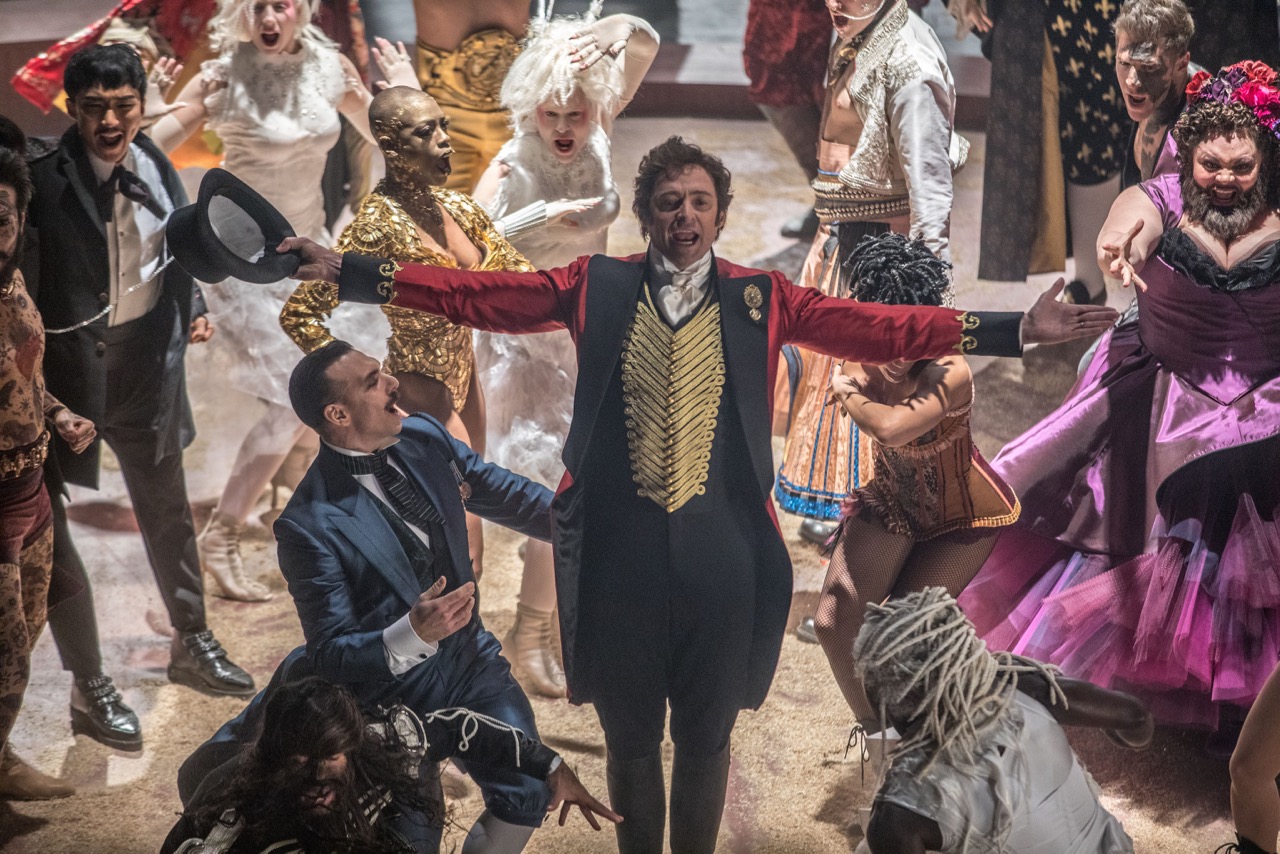
P.T. Barnum (Hugh Jackman) with the oddities in The Greatest Showman. Photo: Niko Tavernise.
The Greatest Showman, directed by Michael Gracey
• • •
For the current US theatrical release of The Greatest Showman, a persistently insipid musical based on the career of legendary nineteenth-century impresario Phineas Taylor Barnum, director Michael Gracey and star Hugh Jackman appear in a PSA-style clip prepended before the film’s opening credits. Against a featureless backdrop, the two Aussies thank the audience for experiencing the film, as Jackman states, “the way it was meant to be seen—in the theater, with an audience, on the big screen,” and Gracey furthermore reminds viewers that hundreds of jobs were supported by the making of the motion picture.
Even though sitting through The Greatest Showman does often feel like an act of charity, this high-minded appeal to the crowd’s munificence strikes an odd note. P.T. Barnum is hardly remembered for relying on the masses’ better natures to sell tickets. Infamous as one of history’s greatest pioneers of the publicity stunt, he has long been celebrated as a scam artist extraordinaire; a showbiz folk hero unparalleled for his ability to separate rubes from their cash; an unabashed trafficker in human oddities, exaggerated novelties, and fraudulent artifacts. While Barnum didn’t actually coin the phrase “There’s a sucker born every minute,” your willingness to believe that he did goes halfway to proving the axiom’s point.
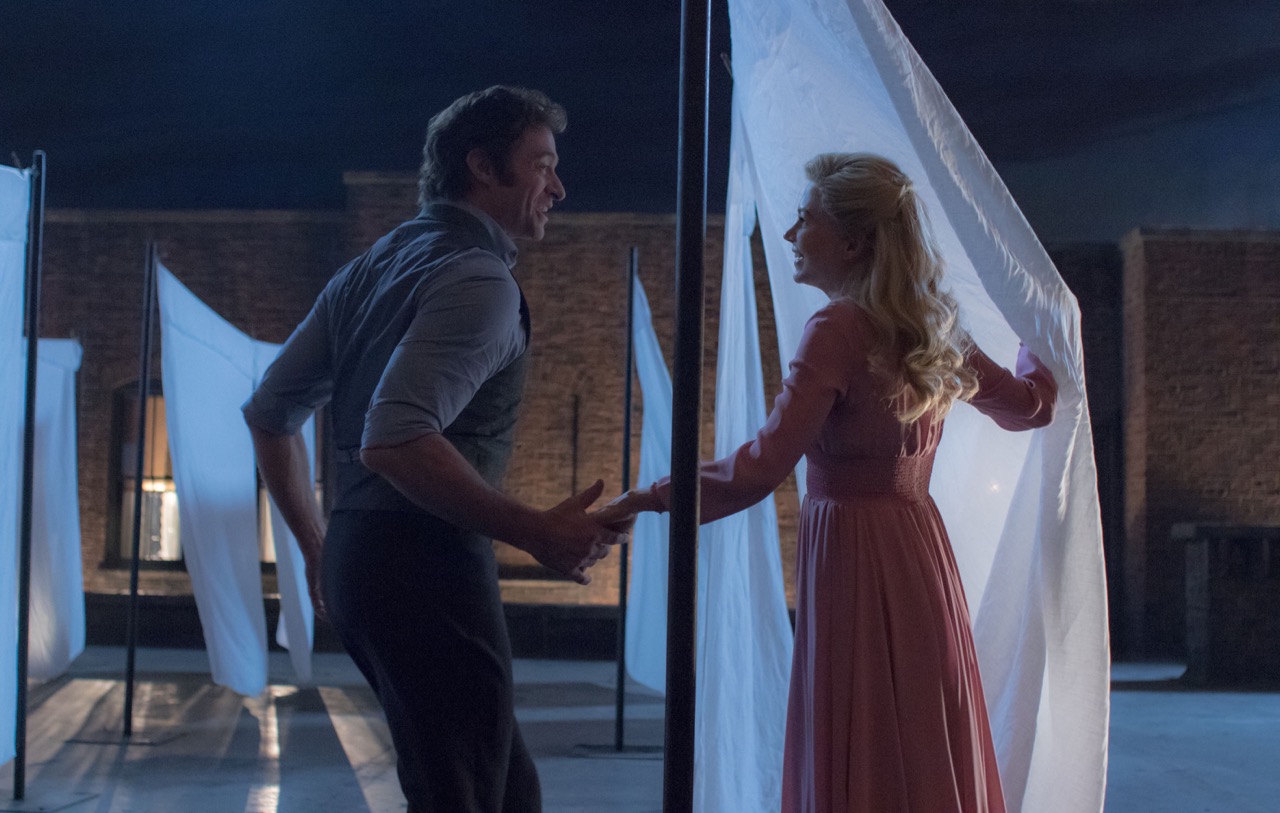
P.T. Barnum (Hugh Jackman) and Charity Barnum (Michelle Williams) in The Greatest Showman. Photo: Niko Tavernise.
The dissonance between the historical Barnum’s moral complications and The Greatest Showman’s attempt at lightweight family fare ends up being the most compelling aspect of Jackman’s years-in-the-making passion project. The script, by Jenny Bicks and Bill Condon, generously reshapes and bowdlerizes Barnum’s oft-told life story to fashion a Disneyfied arc. After a bombastic opening number (“The Greatest Show”) that praises the spectacle of circus entertainment as “everything you ever want,” Barnum’s childhood is given the hoary Horatio Alger treatment: he’s portrayed as a poor scamp, thieving bread from a grocer and flirting with the daughter of a wealthy businessman. Kid Phineas (Ellis Rubin) sings “A Million Dreams,” extolling his desire to “run away to a world that we design,” and eventually gets the girl despite her father’s protestations. Grown-up Barnum (Jackman) and his new wife Charity (Michelle Williams) complete the song, dancing on a tenement rooftop among rows of animated laundry that reverently flap in synchrony. Their duet concludes with the couple caressing her pregnant belly as they sing of the “million dreams for the world we’re gonna make.”
By positioning Barnum as fundamentally a family man, The Greatest Showman presents his subsequent career as a simultaneous fulfillment of a man’s heroic self-actualization and his desire to support his wife and children. This hackneyed if wholesome heterosexual fantasy becomes a weird fit for ensuing events. Soon Barnum is putting food on the table by purchasing and then refurbishing a moldy museum of curiosities, then canvassing for a collection of “human oddities” to appear as attractions. These range from a bearded lady (Broadway singer Keala Settle), hiding her hirsute visage in the back of a sweatshop; four-foot-tall General Tom Thumb (Sam Humphrey), coaxed out of his overprotective mother’s house; and a brother-and-sister team of black trapeze artists, W.D. and Anne Wheeler (Yahya Abdul-Mateen II and Zendaya), whose oddity, we are asked to imagine, is their race. “You know, people aren’t going to like it if you put us on stage,” the brother says (while auditioning, strangely). “Oh, I’m counting on it,” Barnum replies. His new troupe of singing, dancing anomalies is gathered together via peppy montage, featuring Barnum’s friendly efforts to persuade the poor wretches to step out of the shadows and into the spotlight. “They’re going to laugh at you anyway,” he pitches Tom Thumb, “so you might as well get paid!”
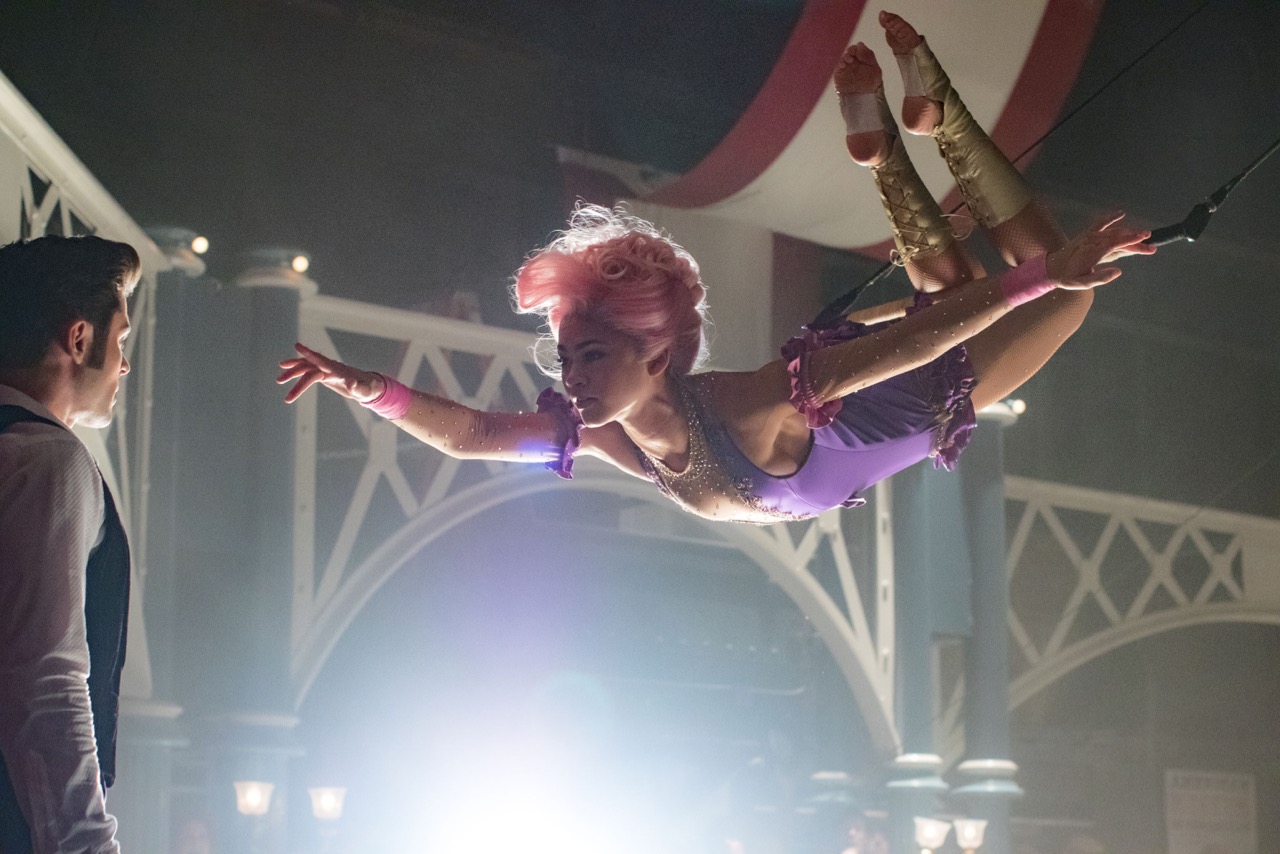
Phillip Carlyle (Zac Efron) and Anne Wheeler (Zendaya) in The Greatest Showman.
The bearded woman and Tom Thumb are both based on two of Barnum’s most famous performers, but the trapeze artists are modern fictions, introduced into the tale as moral counterweights. This crude revision of Barnum as a white able-bodied savior—a kind of Oskar Schindler of the sideshow—is particularly in bad taste considering the far more unsavory historical realities. As a number of critics have noted, the actual Barnum began exhibiting human oddities with the purchase of the elderly Joice Heth, a blind, partially paralyzed slave whom he touted as George Washington’s 161-year-old nursemaid; he later had her autopsied to assess her true age, for publicity purposes. Charles Stratton, the real man whom Barnum advertised as General Tom Thumb, was essentially sold into show business by his family at age four, though he would eventually become wealthy from his Barnumized celebrity. Even without such unflattering details, the very notion of selling tickets to gawk at people with physical abnormalities is so alien to our contemporary ethos that it provides an inherently awkward subject matter for a PG-rated family-friendly musical. Today’s families have not been clamoring to experience the sight of Jo-Jo the Dog-Faced Boy singing and dancing with a set of conjoined twins.
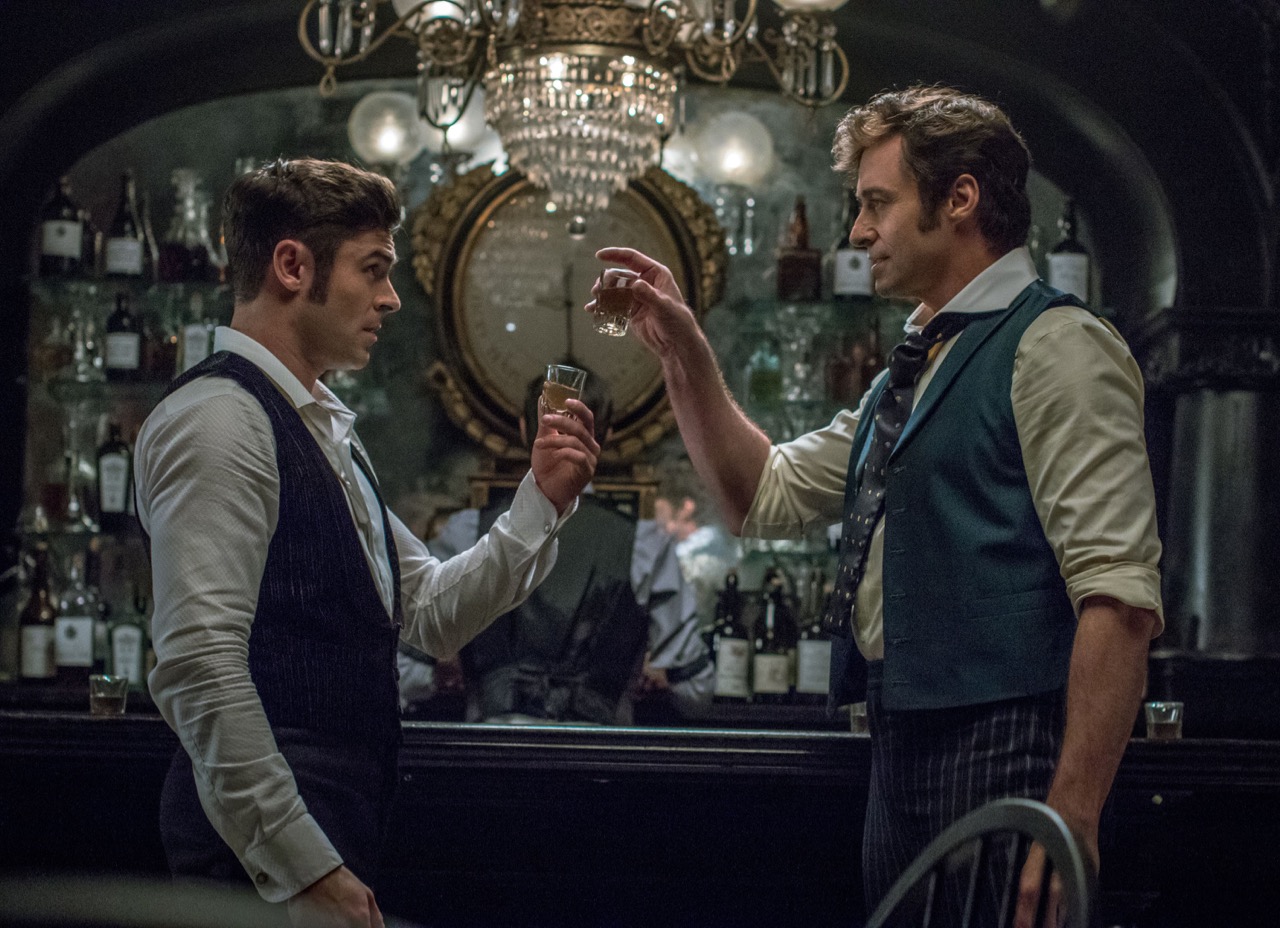
Phillip Carlyle (Zac Efron) and P.T. Barnum (Hugh Jackman) in The Greatest Showman.
Historical distortions aside, Jackman and company don’t fare much better in the razzmatazz department. The songs, courtesy of the lyricists responsible for the far more insufferable La La Land, are uniformly pedestrian and forgettable. After wooing the younger, more aristocratic Phillip Carlyle (Zac Efron) to the tune of the love-song-cum-business-negotiation “The Other Side,” Barnum uses his new partner to contract opera singer Jenny Lind (Rebecca Ferguson), hailed as the Swedish Nightingale, for her first US tour. But when the moment arrives for Lind to wow the Americans, she trumpets forth an unremarkable show tune, embellished with the pointless technical flourishes of an American Idol contestant. Visual spectacle falls as flat as a dead elephant; the movie’s big trapeze number is choreographed with the plastic gusto of a 1990s soft-drink commercial.
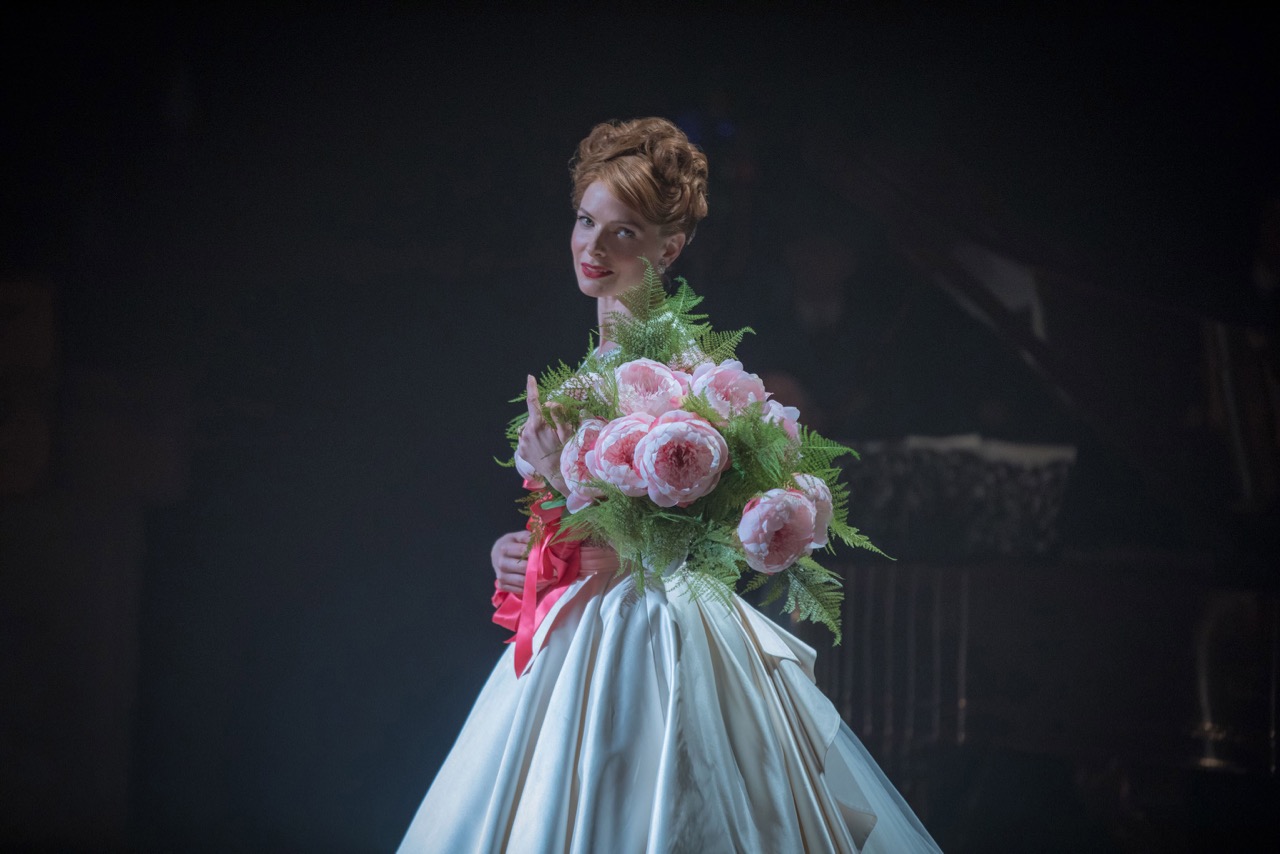
Jenny Lind (Rebecca Ferguson) in The Greatest Showman. Photo: Niko Tavernise.
It’s understandable that The Greatest Showman would want to tell Barnum’s bigger-than-life story. His virtuosity at drumming up publicity was far more ingenious than the film admits: for instance, he often submitted editorials to newspapers under pseudonyms to denounce his own exhibitions and thereby stoke controversy. This is why Barnum became, even in his own time, a figure from a tall tale, a walking myth. We could use some better cinematic investigations of this peculiarly American legend: perhaps a film that argues for Barnum as a proto-Warhol, gathering unlikely performers around him from the fringes of society; or Barnum as a Victorian Andy Kaufman, confounding audiences by leaving them wondering if they’re being hoodwinked or not; Barnum as the ancestor of reality television, feeding our desire to rubberneck in order to generate profits; or, of course, Barnum as the spiritual great-grandfather of Donald Trump, a dangerously skillful bamboozler who uses his abilities to play the press and seize power. But none of these Barnums are explored here. In The Greatest Showman, the entertainment industry offers its own self-serving version of Barnum: the entrepreneur-as-enlightened-artist, the ego-ideal of a Hollywood producer. After all, wasn’t the entertainment industry built by upstanding family men who wanted nothing more but to make audiences happy?
Ed Halter is a founder and director of Light Industry, a venue for film and electronic art in Brooklyn, New York, and Critic in Residence at Bard College in Annandale-on-Hudson, New York. He is the recipient of the Thoma Foundation 2017 Arts Writing Award in Digital Art for an emerging arts writer, awarded by the Carl & Marilynn Thoma Art Foundation.